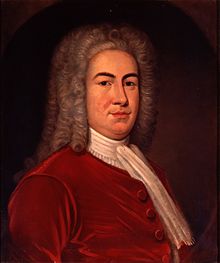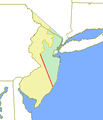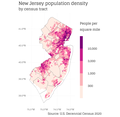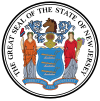Portal:New Jersey
The New Jersey Portal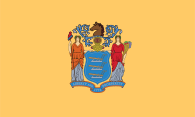 New Jersey is a state situated within both the Mid-Atlantic and Northeastern regions of the United States. It is the most densely populated of all 50 U.S. states, and is situated at the center of the Northeast megalopolis. New Jersey is bordered on its north and east by New York state; on its east, southeast, and south by the Atlantic Ocean; on its west by the Delaware River and Pennsylvania; and on its southwest by Delaware Bay and Delaware. At 7,354 square miles (19,050 km2), New Jersey is the fifth-smallest state in land area, but with close to 9.3 million residents as of the 2020 United States census, its highest decennial count ever, it ranks 11th in population. The state capital is Trenton, and the state's most populous city is Newark. New Jersey is the only U.S. state in which every county is deemed urban by the U.S. Census Bureau with 13 counties included in the New York metropolitan area, seven counties in the Philadelphia metropolitan area, and Warren County part of the heavily industrialized Lehigh Valley metropolitan area. New Jersey was first inhabited by Paleo-Indians as early as 13,000 B.C.E., with the Lenape being the dominant Indigenous group when Europeans arrived in the early 17th century. Dutch and Swedish colonists founded the first European settlements in the state, with the British later seizing control of the region and establishing the Province of New Jersey, named after the largest of the Channel Islands. The colony's fertile lands and relative religious tolerance drew a large and diverse population. New Jersey was among the Thirteen Colonies that supported the American Revolution, hosting several pivotal battles and military commands in the American Revolutionary War. On December 18, 1787, New Jersey became the third state to ratify the United States Constitution, which granted it admission to the Union, and it was the first state to ratify the U.S. Bill of Rights on November 20, 1789. (Full article...) Selected article -
The Battle of Princeton was a battle in which General George Washington's revolutionary forces defeated British forces near Princeton, New Jersey. On the night of January 2, 1777 George Washington, Commander-in-Chief of the Continental Army, repulsed a British attack at the Battle of the Assunpink Creek in Trenton. That night, he evacuated his position, circled around General Lord Cornwallis' army, and went to attack the British garrison at Princeton. Brigadier General Hugh Mercer, of the Continental Army, clashed with two regiments under the command of Lieutenant Colonel Charles Mawhood of the British Army. Mercer and his troops were overrun and Washington sent some militia under General John Cadwalader to help him. The militia, on seeing the flight of Mercer's men, also began to flee. Washington rode up with reinforcements and rallied the fleeing militia. He then led the attack on Mawhood's troops, driving them back. Mawhood gave the order to retreat and most of the troops tried to flee to Cornwallis in Trenton.
In Princeton itself, General John Sullivan forced some British troops who had taken refuge in Nassau Hall to surrender, ending the battle. After the battle, Washington moved his army to Morristown, and with their third defeat in 10 days, the British evacuated southern New Jersey. With the victory at Princeton, morale rose in the ranks and more men began to enlist in the army. The battle was the last major action of Washington's winter New Jersey campaign, and the site is now Princeton Battlefield State Park. Selected picture - Credit: Zeete Rutgers University is the largest institution for higher education in the state of New Jersey. It was originally chartered as Queen's College in 1766, and is the eighth-oldest college in the United States. New Jersey news'Related portalsSelected biography -William Burnet (March 1687/88 – 7 September 1729) was a British civil servant and colonial administrator who served as governor of New York and New Jersey (1720–1728) and Massachusetts and New Hampshire (1728–1729). Born into a position of privilege (his godfather became William III of England not long after his birth, and his father Gilbert Burnet was later Bishop of Salisbury), Burnet was well-educated, tutored among others by Isaac Newton. Active for most of his life in intellectual pursuits (he was elected a Fellow of the Royal Society in 1705/6), he occupied no posts of importance until financial considerations and political connections brought him the governorships of New York and New Jersey. His tenure in New Jersey was without major controversies, although he set a precedent there for accepting what were effectively bribes in exchange for his assent to legislation. In New York he sought unsuccessfully to end the fur trade between Albany and Montreal in order to implement a colonial policy preferring direct trade with the Native Americans in central North America. His New York rule was marked by an increase in political divisions between landowners (with whom Burnet sided) and merchants. After the death of King George I, King George II appointed Burnet governor of New Hampshire and Massachusetts. (Full article...)Did you know? -
General imagesThe following are images from various New Jersey-related articles on Wikipedia.
TopicsQuality content
CategoriesThings you can do
For more information on how you can help, see the WikiProject New Jersey. Associated WikimediaThe following Wikimedia Foundation sister projects provide more on this subject:
Discover Wikipedia using portals |


